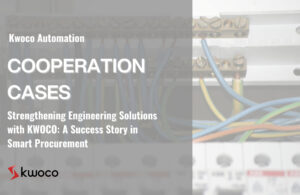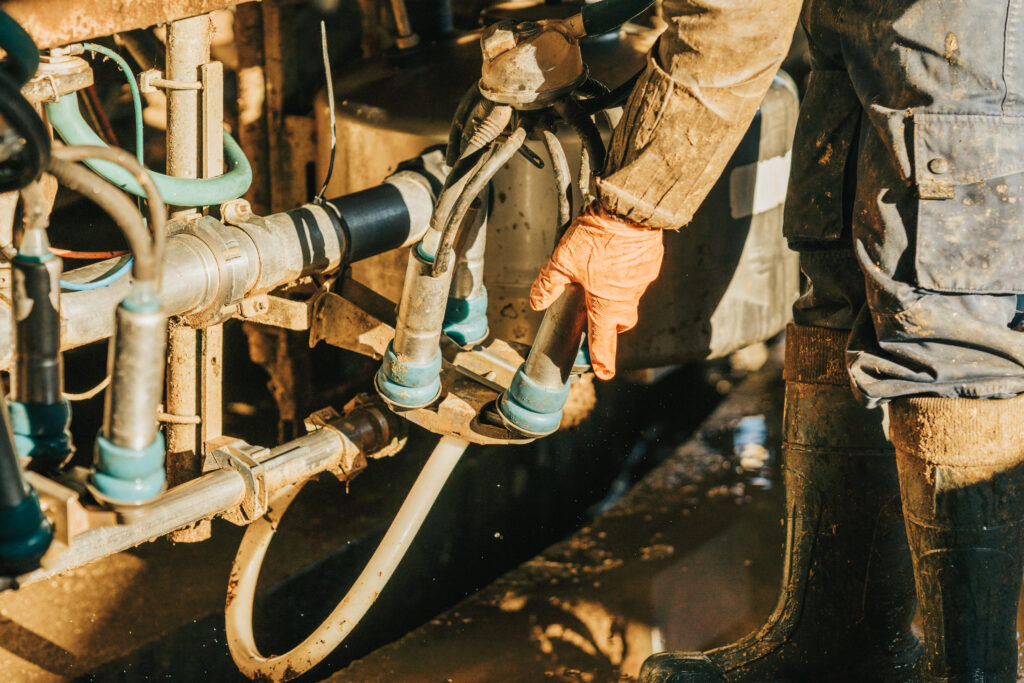Seviye Sensörü Nedir? Türleri ve Uygulamaları Anlamak
Bu blog yazısında, çeşitli seviye türlerini inceleyeceğiz sensörler, bunların işlevleri ve ideal uygulamaları.
İçindekiler
Seviye Sensörleri Nelerdir?
Seviye sensörleri, kaplar veya tanklar içindeki sıvıların, katıların veya granül maddelerin seviyelerini algılamak ve ölçmek için kullanılan cihazlardır. Bu cihazlar, algılanan seviye verilerini elektrik sinyallerine dönüştürerek çalışır ve bu sinyaller daha sonra süreçlerin izlenmesi ve kontrol edilmesi için kullanılabilir.
Seviye sensörleri nokta seviye sensörleri ve sürekli seviye sensörleri olarak kategorize edilebilir:
- Nokta Seviye Sensörleri:Bir maddenin belirli bir seviyeye ulaşıp ulaşmadığını tespit etmek.
- Sürekli Seviye Sensörleri:Seviye yükseldikçe veya alçaldıkça gerçek zamanlı, hassas seviye ölçümleri sağlayın.
Ayrıca seviye sensörleri ölçülen malzeme ile temaslarına göre de sınıflandırılabilir:
- İstilacı Sensörler: Madde ile doğrudan temas kurmayın.
- Temassız Sensörler: Ölçüm için ses veya elektromanyetik dalgaları kullanın.
Nokta Seviye Sensörlerinin Türleri
1. Kapasitans Seviye Sensörleri
Kapasitans sensörleri, sıvı veya katıların seviyesini tespit etmek için elektrik alanını kullanır.
- Avantajları: Küçük, hassas, düşük maliyetli ve hareketli parçaları yoktur.
- Sınırlamalar: Kalibrasyon gerektirir ve yalnızca belirli sıvılar için uygundur.
- Uygulamalar: Su arıtma tesislerindeki depolama tankları için idealdir.
2. Optik Seviye Sensörleri
Bu sensörler sıvının varlığını tespit etmek için kızılötesi ışık kullanır.
- Avantajları: Kompakt, yüksek basınç ve sıcaklıktan etkilenmez ve bakım gerektirmez.
- Sınırlamalar: Lens kirlenirse temizlenmesi gerekir.
- Uygulamalar: Yağ, soğutma sıvısı veya hidrolik sistemlerde düşük seviye göstergesi olarak kullanılır.
3. İletkenlik (Direnç) Seviye Sensörleri
İletkenlik sensörleri, sıvı seviyelerini algılamak için elektrotlara ve akım akışına güvenir.
- Avantajları: Uygun fiyatlı, kullanımı kolay ve dayanıklı.
- Sınırlamalar: Sadece iletken sıvılar için uygundur ve zamanla aşınabilir.
- Uygulamalar:Genellikle depolama tanklarında yüksek veya düşük seviye tespiti için kullanılır.
4. Titreşimli (Ayar Çatalı) Seviye Sensörleri
Diyapozon sensörleri titreşim frekansındaki değişimlere bağlı olarak seviyeleri ölçer.
- Avantajları: Kompakt, uygun maliyetli ve bakım gerektirmez.
- Sınırlamalar: İnvazivdir ve sadece belirli materyaller için uygundur.
- Uygulamalar:Madencilik, gıda işleme ve kimya endüstrilerinde yaygın olarak kullanılır.
5. Şamandıralı Şamandıralar
Şamandıra anahtarları, şamandıra yukarı veya aşağı hareket ettikçe bir devreyi açıp kapatarak seviyeleri algılar.
- Avantajları: Maliyet etkin, basit ve güç gerektirmez.
- Sınırlamalar: Hareketli parçalara sahiptirler, büyük boyutludurlar ve sınırlı hassasiyet sunarlar.
- Uygulamalar:Sıvı depolama tanklarında yüksek veya düşük seviye tespiti için sıklıkla kullanılır.
Sürekli Seviye Sensörlerinin Türleri
1. Ultrasonik Seviye Sensörleri
Ultrasonik sensörler, dalga yansıma süresine bağlı olarak seviyeleri ölçmek için ses dalgaları yayar.
- Avantajları: Temassız, kendi kendini temizleyen, kompakt ve malzeme özelliklerinden etkilenmeyen.
- Sınırlamalar: Pahalıdır ve çevre koşullarına duyarlıdır.
- Uygulamalar: Endüstriyel tesislerdeki sıcak sıvı depolama tankları için uygundur.
2. Radar (Mikrodalga) Seviye Sensörleri
Radar sensörleri, sinyal yansıma süresini ölçerek seviyeleri belirlemek için mikrodalgaları kullanır.
- Avantajları: Hassas, sıcaklık ve basınçtan etkilenmeyen, çeşitli malzemeler için uygun.
- Sınırlamalar: Yüksek maliyet ve sınırlı tespit aralığı.
- Uygulamalar: Sıcak asfalt tanklarında veya viskoz maddelerin depolanmasında seviye ölçümü için idealdir.
Doğru Seviye Sensörünü Seçmek
Seviye sensörü seçerken şunları göz önünde bulundurun:
- Malzeme Özellikleri:Madde sıvı, katı veya tanecikli midir?
- Ölçüm Gereksinimleri: Kesin verilere mi yoksa basit bir yüksek/düşük göstergesine mi ihtiyacınız var?
- Çevresel Koşullar:Uygulama alanının sıcaklığını, basıncını ve temizliğini göz önünde bulundurun.
- Maliyet ve Bakım:Uygun fiyat ve bakım kolaylığı arasında denge.
Seviye Sensörlerinin Genel Uygulamaları
Seviye sensörleri aşağıdakiler de dahil olmak üzere çeşitli endüstrilerde kullanılır:
- Otomotiv: Yakıt seviyesi takibi.
- Üretme: Sıvı depolama yönetimi.
- Yiyecek ve İçecek: Üretim hatlarında seviye kontrolü.
- Madencilik: Silolardaki malzemelerin ölçümü.
- Ev Aletleri: Buz makineleri ve çamaşır makineleri.
Projelerinize yepyeni, orijinal Omron, Mitsubishi, Schneider PLC'lerle güç katın - stokta, hemen kullanıma hazır!
Çözüm
Seviye sensörleri, sıvı ve katı seviye izlemede hassasiyet ve güvenilirliği sağlamak için vazgeçilmez araçlardır. Bu sensörlerin türlerini, işlevlerini ve uygulamalarını anlayarak, belirli kullanım durumunuzda operasyonel verimliliği artırmak için bilinçli kararlar alabilirsiniz.
İster endüstriyel süreçleri yönetiyor olun, ister günlük kullanım için cihazlar tasarlıyor olun, doğru seviye sensörü her şeyi değiştirebilir.
Endüstriyel sensör tedarikçisi arıyorsanız, Kwoco ile iletişime geçin. En iyi markaların dünya çapında sevk edilen, yepyeni orijinal sensörlerini sağlıyoruz. Omron Ve Anahtar.
Bize Ulaşın
Bu forma adınızı, e-posta adresinizi ve sorunuzun kısa bir açıklamasını girmeniz yeterlidir. 24 saat içinde sizinle iletişime geçeceğiz.
Bu Konuları da İlginizi Çekebilir

KWOCO ile Mühendislik Çözümlerini Güçlendirme: Akıllı Tedarikte Bir Başarı Hikayesi
KWOCO ile Mühendislik Çözümlerini Güçlendirme: Akıllı Tedarikte Bir Başarı Hikayesi Endüstriyel otomasyonun rekabetçi ortamında, doğru

VFD Nedir? – Uygulamalarda Nasıl Kullanılır
Değişken Frekans Sürücüleri (VFD'ler), motor hızı ve enerji verimliliği üzerinde benzersiz bir kontrol sağlayarak endüstriyel otomasyonun manzarasını dönüştürüyor. Bu kapsamlı kılavuzda, VFD'nin ne olduğunu, VFD'lerin nasıl çalıştığını ve uygulamalarınızda optimum performans ve enerji tasarrufu elde etmek için nasıl kullanılacağını ele alacağız.

OMRON PLC CJ2 Serisi Hakkında 10 Temel Bilgi
OMRON PLC CJ2 Serisi Hakkında 10 Temel Bilgi KWOCO, uluslararası alanda tanınmış endüstriyel otomasyon ürünlerine odaklanıyor, kapsamlı uygulamalı deneyime sahibim






